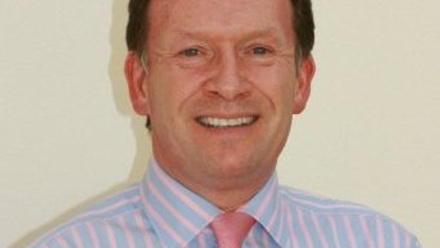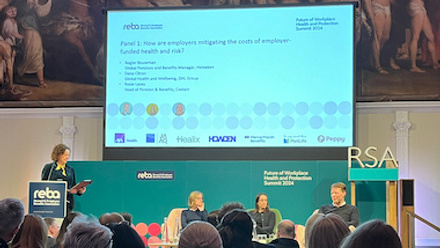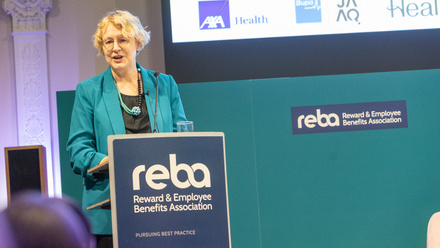Making suicide personal – why zero suicides is achievable

As I pondered this, my initial reaction was that I’m no expert on the subject and there are others far better qualified to do this. This won’t change but, as I cogitated, it occurred to me that I’m not quite the stranger to suicide as I made out to myself – as it has, in fact, breathed past me several times.
I have three family members and two acquaintances who’ve tried to kill themselves. But I’ve been lucky as all these people are still here and whilst I’ve sometimes been on a knife-edge, I haven’t been left facing the abyss of hopelessness and despair that must surely come following the death by suicide of someone close.
But sadly, I also know people who haven’t been so lucky. A colleague who lost her step-father. Another who lost her best friend. And a friend of a friend who went to a school event with one child, only to find on her return that she’d lost the other.
I’ve also been caught up in the aftermath of a suicide on my commute on two occasions.
So, that’s 10 times (that I’m aware of) where suicide has touched my life. I don’t know if that’s an average sort of figure or not, but it helps bring the stats to a more meaningful level for me. And if we multiply that up by the number of people we know, by those we work with and those in our industry and wider community, we can begin to fathom the enormity of the numbers – and each number has a person and a story attached to it that we mustn’t lose sight of.
Recent ONS figures show a significant increase in the rate of deaths registered as suicide in 2018. Some of this may be attributable to a change in the standard of proof used by coroners to determine whether a death was caused by suicide. Until July last year, coroners were required to use the criminal standard of proof (ie beyond reasonable doubt) rather than the civil standard of proof (on the balance of probabilities) when reaching a conclusion of suicide at inquest. (This was a throwback to the days when suicide was a crime, despite the fact that it was decriminalised in 1961.)
Although the figures were expected to spike following that change, experts are still expressing concern over the increase.
You can see then, there’s a real need to talk about suicide and to change perceptions so people see it as a preventable and avoidable death, and so everyone is able to support someone who’s at risk. But you’d be forgiven for thinking a concept of “zero suicide” is way off the mark.
Or is it?
This is a think-different, think-big concept that originated at a health management organisation in Detroit. It’s about a different way of approaching suicide within the healthcare system – about no death being acceptable or inevitable.
It’s about daring to think that the benchmark should be zero, because, otherwise, what’s the number? Is it one? Is it 10? Is it 100? What’s the acceptable number? The acceptable number of deaths from suicide should surely be zero.
Getting there means training people to better spot and help people who are at risk of suicide, using real-time data, learning from each death, and using that to make rapid change, improving access to care and earlier interventions. And, not least, removing access to a means of suicide where possible.
Amazingly, the Henry Ford Health System first achieved zero suicides for its patient population in 2008. Obviously, there’s much more background and detail to this that time doesn’t permit in this piece but, fast forward a few years, and this concept has transferred to the UK.
Mersey Care NHS Foundation Trust was the first to adopt the Zero Suicide approach and a growing number of other Foundation Trusts are now following suit. And the Zero Suicide Alliance has been formed as a collaborative of NHS trusts, businesses and individuals who are all committed to making zero suicide a reality in the UK.
Because, the thing is, not many people just wake up one day, having been fine the day before, and decide to kill themselves. There’s generally a long, tortuous journey to that point – along which, are many opportunities for interventions, if only we would make them.
Anecdotally, survivors of a suicide attempt often say that if just one person had asked “Are you OK?” or “Is something wrong?” or “Can I help you?”, they wouldn’t have done it.
Sometimes, we only have one chance to make a difference to the outcome so why not make this more personal?
- In your life
- In your business
- In your dealings with colleagues and others
If you look around, is there someone always on the edge of things for example, never joining in? Is there someone in visible distress? Or someone who’s become withdrawn or unusually bad tempered? Or someone people pick on, bully or ridicule?
Why not equip yourself (and your colleagues) so you can have that conversation with them? The Zero Suicide Alliance has some free online training aimed at helping people do just that – to see, to say and to signpost – to step in and support someone at risk. 20 minutes of your time could save a life.
In addition, you can really make a difference to a life or death outcome by:
- knowing where to signpost people to within the mental health support framework your own organisation has in place
- being aware of what you have at your disposal via any group risk protection insurance you have in place
- and knowing how your people can access that help.
These aren’t just quick fixes either, but longer-term interventions and contact that help people put their lives back together and get back to full functionality at work.
The author is Katharine Moxham, Spokesperson for Group Risk Development (GRiD).
This article is provided by Group Risk Development (GRiD).
* 293 claims were paid by group risk providers for deaths by suicide during 2018 – GRiD Claims Survey 2019






